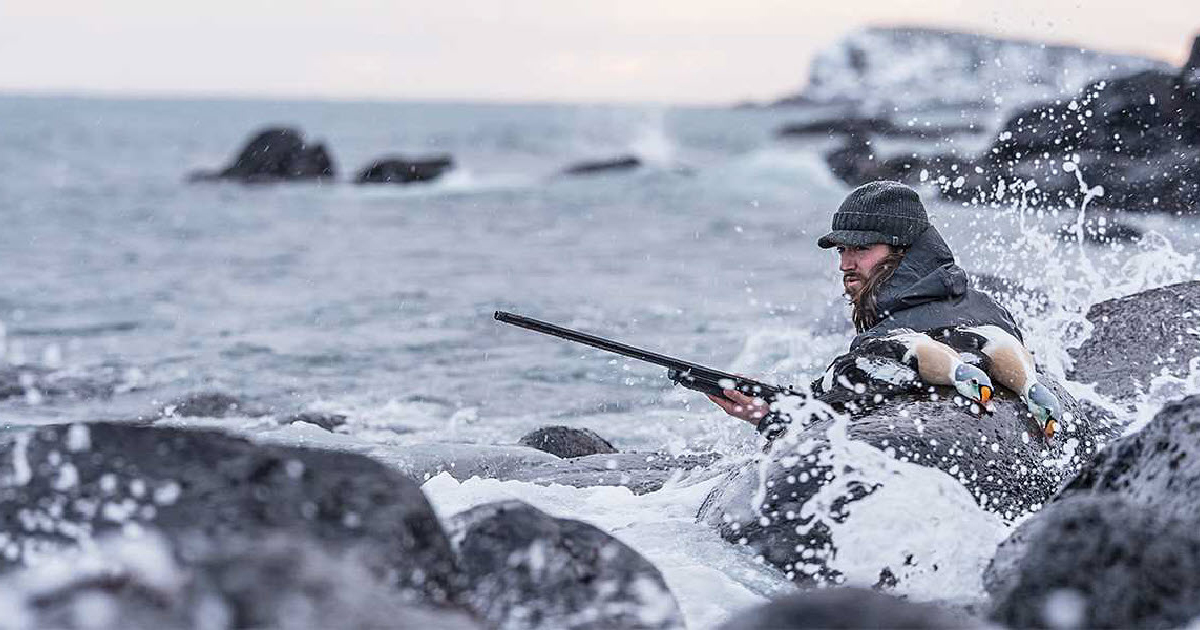Battling the Elements
Keep your shotgun functioning in even the worst weather conditions
Keep your shotgun functioning in even the worst weather conditions

From the DU Magazine Archives—Updated for 2023

The harsh, late-season weather that makes ducks and geese desperate to feed can also be tough on guns. No one wants to go through all the trouble of getting on the X only to have a gun that doesn't work in the cold. Here's how to be sure your shotgun will perform when the temperature drops and the hunting heats up.
Keep your guns clean and lubricate them as little as possible. Some oils thicken in cold weather, and rather than helping the gun run smoothly, they gum it up. If the gun is dirty, that thickened oil mixes with fouling to form a gritty sludge that's even worse. Strip your gun of old lubricant with Gun Scrubber or a similar product. Pay special attention to the firing pin, which can become too sluggish to reliably ignite primers. Once the gun is clean, oil it very lightly. Everyone has a favorite for cold weather, from dry lubes and graphite to various cleaner/lubricant/preservative (CLP) products to motor oil. Some believe no lubricant at all is best in the cold. Whatever you use, don't use much, and make sure to clean and lubricate the gun normally after the hunt.
If you take a warm gun into the cold, or bring a cold gun inside, the sudden change in temperature can cause moisture to condense. When you go from warm to very cold, that condensation can freeze and cause your gun to malfunction. If you can safely leave a gun in your vehicle or in an unheated shed or garage, you can avoid this. As soon as you get home, take your cold gun out of its case—especially if you use a watertight floating case and wipe it down with an oiled rag to prevent rust.
I have dropped guns in the water and had them ice up, then thawed them out by warming the receiver with my bare hands. It's a better idea to carry a spray can of locksmith's deicer in your blind bag. I once purposely dunked my gun in a creek on a late-season hunt to clear a muzzle packed with mud. Now I carry a collapsible cleaning rod and brushes to remove obstructions from the barrel.
An extra gun is the best insurance against cold-weather problems. My backup is an over/under, which I've found to be the most reliable action type. With a few exceptions, gas guns seem to be the most difficult to keep functioning in very cold conditions. Inertia guns fare better, and pumps are better still, but double guns are the most weatherproof of all. The actions are completely enclosed, keeping snow and rain out, and they have few moving parts. When it gets truly cold, I'd rather have a two-shot gun I know will shoot twice than a three-shot gun that may fire only once.
The first time I heard the phrase "polar vortex" was on a goose hunt. I scratched out a limit despite my fingers being numb and my gun failing every way a gun can—it wouldn't cycle, the firing pin froze, even the magazine spring seized up as blowing snow worked its way into all parts of the gun. The only remedy for snow and freezing rain is to try to keep the gun out of it, and to take it apart completely and clean it inside and out after the hunt. The worst weather I ever hunted in was rain that froze the instant it hit my gun and clothing. When it came time to shoot, I could scarcely raise my arms in my ice-crusted sleeves or release the frozen safety. We packed up and went home while the roads were still passable. The right precautions can get you through most late-season hunts, but every once in a while the weather wins no matter what you do.
Late-season ducks and geese are bigger, fatter, and warier than opening-day birds, which means the performance and function of your shotgun and ammunition this time of year is crucially important. But dense, cold air opens patterns and robs shells of velocity. Keep ammunition in your pockets where it can stay warm, and consider tighter chokes and/or larger shot sizes to compensate for potentially poorer ballistics.
Ducks Unlimited uses cookies to enhance your browsing experience, optimize site functionality, analyze traffic, and deliver personalized advertising through third parties. By continuing to use this site, you agree to our use of cookies. View Privacy Policy